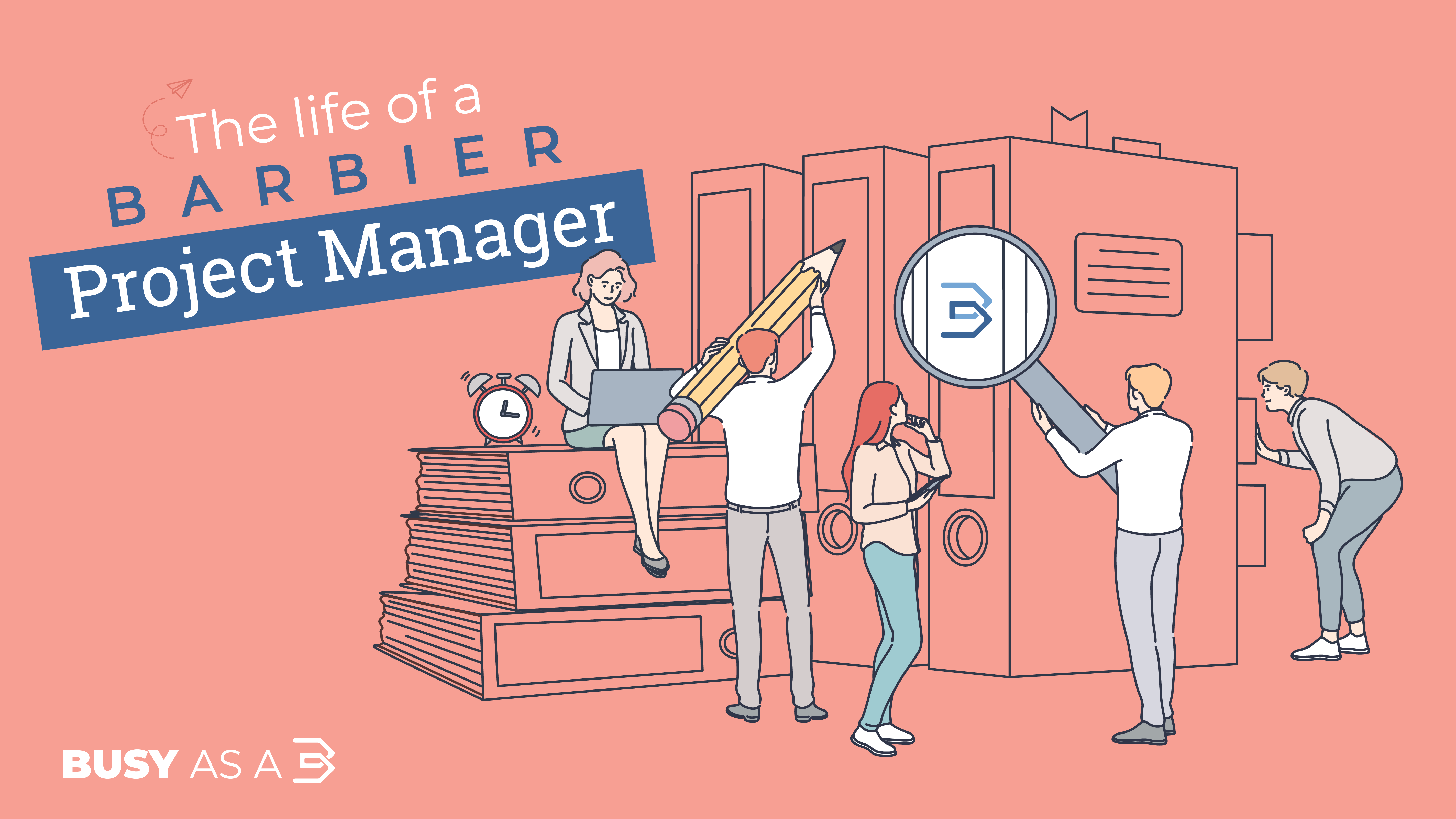While the TEP process (Translation, Editing, and Proofreading) is the backbone of any translation project, there’s much more happening behind the scenes. Can a translator manage a project from start to finish? Absolutely! But at Barbier International, we believe that our translation teams should focus on what they do best—the linguistic work—while our dedicated Barbier Project Managers handle everything else.
A Day in the Life of a Barbier Translation Project Manager
It’s only 8:40 a.m., and I’ve already responded to 21 emails! Project management is fast-paced and varied, so let’s break down the steps of a typical project:
Client Inquiries
New clients often need guidance on submitting their projects (it’s as easy as sending your files to translations@barbierinc.com), or they may be unsure about which services they need—translation, interpretation, transcription or proofreading. We help tailor solutions to meet their specific needs. Pricing questions are also common, as factors like word count, language pairs and rush requests impact costs. Barbier provides transparent communication about project timelines and pricing to ensure clients are fully informed and confident in our process. And, being ISO 17100-certified, we guarantee a high standard of service.
Processing the Project
Our role as Barbier Project Managers is to understand the full scope of each project. We ask the right questions upfront to ensure we have all the details, preventing any misunderstandings later on. This includes reviewing client glossaries, style guides, preferences and any additional context that could affect the translation. Once the client agrees to the terms, we document everything carefully. Projects can range from a one-page file to a 350-page document or even 499 smaller files—so organization from the start is critical!
File Recreation
When clients provide files that aren’t editable or compatible with our CAT (Computer-Assisted Translation) tools—like PDFs, scanned documents or images—our Desktop Publishing (DTP) team steps in. They recreate these files in an editable format, like Word or InDesign, while preserving the original layout. After verifying that all content has been properly included, the files are ready for translation.
The TEP Process
Once the file is ready, we import it into our CAT tool (which is not the same as machine translation) and assign it to our team of linguists. With over 200 languages covered, these tools allow us to leverage a client’s translation memory, ensuring consistency across projects. Terminology databases within the CAT tools also help manage key terms effectively.
Barbier linguists may reach out with questions about the source text—typos, missing information, or inconsistencies—which can make projects complex, especially when multiple languages are involved. For multilingual projects, any client-approved changes must be applied consistently across all translations. Clear communication is vital to ensure everything runs smoothly.
Final Formatting
Barbier’s DTP team returns during the final stages to format the translated document according to the client’s requested output—whether it’s a Word file, PowerPoint, Canva poster, interactive PDF, HTML or something else. Once our linguists have provided the translation, adjustments may be necessary to fit the layout, as languages often differ in text length and structure. Our team ensures that fonts, styles, logos, graphics and overall design remain intact. For charts, diagrams or images with embedded text, we insert the translated content without compromising the original design.
Quality Assurance
Perhaps the most critical part of our job as a Barbier Project Manager is quality assurance (QA). We must ensure the entire source text has been translated, formatting is accurate and the final file meets all client specifications. Attention to detail is paramount—even a missing period can be significant! Any necessary corrections are communicated with our linguists and DTP team to produce a flawless, final product. The goal of Barbier’s QA department is to deliver a high-quality, error-free document that adheres to the linguistic and technical standards of our industry.
Closing the Project
Once the final document is delivered, Barbier Project Managers remain attentive to client feedback, addressing any concerns or revision requests promptly. The last steps are archiving the project and completing reports for invoicing, language usage and other data that our clients have asked us to collect, which is often delivered in a supplemental report. While it might seem straightforward in theory, managing a translation project involves many moving parts. From coordinating with linguists and ensuring quality control to handling client communications and final deliverables, every step requires precision and teamwork. Barbier Project Managers work tirelessly behind the scenes to keep everything running smoothly, proving that successful project management is about more than just strategy—it’s about collaboration.
Interested in Joining the Team?
If the role of a translation project manager intrigues you, Barbier is looking for talented bilingual project managers (English must be one of the languages) to join our remote global team. Send your resume to careers@barbierinc.com and take the next step in your career!


Leave a Reply